By Christopher Rollyson Visions for Technology Leadership
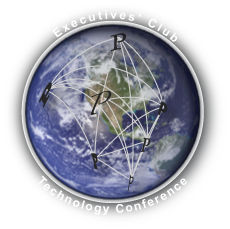 After Gary Forsee’s luncheon address, a diverse panel of executives took the stage to discuss global technology leadership. Hardik Bhatt, CIO of the City of Chicago, Steve Goldman, Director of Architecture, the Chicago Mercantile Exchange, Raymond Spencer, CEO of Kanbay International, and David Weick, Global CIO of McDonald’s, shared their visions for Chicago’s global role in the world. Janet Kennedy, Midwest General Manager of Microsoft, gracefully moderated the panel discussion. The Executives’ Club of Chicago’s quarterly Technology Conference took place March 8 at the Chicago Hilton. After Gary Forsee’s luncheon address, a diverse panel of executives took the stage to discuss global technology leadership. Hardik Bhatt, CIO of the City of Chicago, Steve Goldman, Director of Architecture, the Chicago Mercantile Exchange, Raymond Spencer, CEO of Kanbay International, and David Weick, Global CIO of McDonald’s, shared their visions for Chicago’s global role in the world. Janet Kennedy, Midwest General Manager of Microsoft, gracefully moderated the panel discussion. The Executives’ Club of Chicago’s quarterly Technology Conference took place March 8 at the Chicago Hilton.
“Getting global” can mean many things, and panelists hit the issue from many directions. I’ll venture that, more than anything, it means changing one’s mindset, focus and approach, all of which are difficult to measure. All panelists represented organizations that had had international operations for decades, so how is global different?
By Christopher Rollyson Sprint Nextel’s Destiny and the Demand for a New Wireless Future reports on how Sprint Nextel is betting its future on a new wired society.
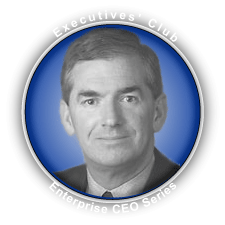 Gary D. Forsee, Chairman and CEO, Sprint Nextel Corporation, set the stage for the Executives’ Club of Chicago’s Technology Conference by outlining Sprint’s wireless strategy and a new vision for global community at the March enterprise CEO luncheon at the Chicago Hilton. Gary D. Forsee, Chairman and CEO, Sprint Nextel Corporation, set the stage for the Executives’ Club of Chicago’s Technology Conference by outlining Sprint’s wireless strategy and a new vision for global community at the March enterprise CEO luncheon at the Chicago Hilton.
Sprint’s long history reflects the transformation of the U.S. telecoms market. The company has had a key role in remaking the U.S. telecoms industry during its privatization. It competed as a competitive local exchange carrier (CLEC) and once earned most of its revenue from long distance services, which are now essentially free. After its 2005 merger with Nextel, virtually all its revenue comes from wireless services.
Moreover, Mr. Forsee promised that Chicago would be one of two pilot cities for Sprint’s WiMAX initiative later this year. Chicagoans will be among the first in the U.S. to try 4G network services.
Sprint’s Wireless Future
Sprint Nextel has seen the future, and it is wireless. In 2007, having mostly completed a painful merger, Sprint is pedal to the metal to enable connected communities. People will use its network to keep connected with social network sites, multimedia (much of which will be created with handsets) and, yes, even talking. He hopes that this will help to rebuild the U.S. sense of “community lost.”
Echoing Motorola’s James O’Connor who spoke at the Executives’ Club in December 2006, Mr. Forsee emphasized that there were 2.7 billion mobile phones in use globally, compared with one billion computers. About one quarter of all Internet users access it through handsets; however, they are growing far more rapidly than PC users.
It is easy to forget that Sprint began as a U.S. CLEC and subsequently became a “long distance” telephone company which, along with MCI, challenged AT&T for its long distance franchise. Today, 85% of its revenue and its highest margins come from the wireless business. Reflecting the relative demise of the long distance business, Mr. Forsee shared a little anecdote:
My business cards used to contain an offer of free long distance minutes on the back. Some months ago, I gave one to a restaurant owner while paying for breakfast. She was puzzled, “Why do I need this? All my minutes are free now, no matter where I’m calling!”
Sprint’s merger with Nextel attempts to pair its strong consumer business with Nextel’s B2B focus. The merger has proven to be much more difficult than expected, due to the companies’ different focuses, networks, processes and cultures. But the merger is the centerpiece of a strategy to become a dominant wireless carrier.
In August 2006, Sprint announced its plan to deploy a 4G (4th generation) network in 2007-08, partnering with Intel, Motorola and Samsung. It will provide ultrafast throughput (most wireless in the U.S. is 2.5G as of writing) and deliver last mile connectivity via WiMAX. Sprint has aggressively acquired spectrum licenses in its quest to build a superior wireless network, and its 2.4 GHz licenses cover 85% of the households in the top 100 U.S. markets, the most of any wireless carrier in any single spectrum band.
This effectively means that people will carry their living rooms in their pockets: with wireless handsets, they will be able to exchange video and pictures, watch TV, listen to radio and surf the Internet as quickly as they can today with their computers. They will create much of this content with their handsets as well. These devices will also have e-wallet capabilities.
Sprint Stores and Pilots Set
Mr. Forsee acknowledged that it would be critical to field well designed devices that could contain all that functionality and provide the ease of use necessary to make it accessible to consumers. Taking a page from Apple’s playbook, Sprint will create “help desks” in its stores to help consumers understand and use the devices and network features. The WiMAX technology to be deployed in the network is expected to offer a cost-per-megabit and performance advantage that reflects a substantial improvement in the comparable costs for the current 3G mobile broadband offerings.
In Fall 2007, Sprint will pilot its 4G Wimax network in Chicago and Baltimore.
Analysis and Conclusions
- Sprint Nextel is taking a substantial risk that, if they build it, customers will come, and I give them credit for that.
- They are plowing massive investment into a new 4G network, when I’m not at all convinced that consumers in the U.S. will buy the value-added services as readily as Sprint hopes. U.S. consumers have frustrated network operators thus far by their unwillingness to pay for enhanced services.
- U.S. adoption lags considerably behind Asian hotspots like Korea, Japan and China as well as Europe. My guess is that it has to do with the U.S.’s computer-centric orientation.
- Although Mr. Forsee didn’t say so directly, it seems obvious that “wireless” will become the communications access service.
- Even “telephone” service will soon be outmoded: data and voice service are increasingly indistinguishable; they are all communications. You might send a video you shot of some friends doing something wacky rather than calling another friend to explain.
- On a social vector, I’m not sure what Mr. Forsee meant by the U.S. sense of “community lost,” but let’s hypothesize that it has to do with families living “distributed” lives. It’s a fact that people are more mobile and spend less time in the same physical space than they used to. I believe that communications services can play a role here, but most important is attention, commitment and focus. Sending a video is rarely a substitute for spending time with someone. That also means giving the person your undivided attention, and not paying attention to other things during that time.
By Christopher Rollyson Helps Busy Executives to Tap Growing Online Professional Network
 March 18, 2007, Chicago, USA—Today, The Global Human Capital Journal released its Review and The Unofficial LinkedIn User”s Guide to aid executives and professionals to mine the hidden value of the rapidly growing website. Founded in 2003, LinkedIn is a leading “social” network site for managing business relationships. It currently has over nine million global members who collaborate for professional purposes. March 18, 2007, Chicago, USA—Today, The Global Human Capital Journal released its Review and The Unofficial LinkedIn User”s Guide to aid executives and professionals to mine the hidden value of the rapidly growing website. Founded in 2003, LinkedIn is a leading “social” network site for managing business relationships. It currently has over nine million global members who collaborate for professional purposes.
LinkedIn represents a transformation opportunity for the Global Human Capital Journal”s executive readership. Business and government leaders can significantly increase their ability to execute strategy by leveraging emerging peer to peer knowledge networks. Notably, an executive”s LinkedIn network is beholden to no employer and can increase mobility.
However, online social networks represent a new social milieu. Most executives interviewed by the GHCJ showed a clear mental gap in understanding the potential of online professional networks. Interviewees included LinkedIn members and nonmembers.
GHCJ Chief Editor Christopher Rollyson, a known networker in high tech and corporate circles, explained the motivation for the project:
“I saw a disconnect between LinkedIn and some of the people who would benefit most by using it—corporate executives and professionals. While LinkedIn”s features are well designed, its appeal to this audience is limited by the lack of a concise guide to help executives to rapidly assess and use LinkedIn. On a personal level, I wanted to encourage many of my offline contacts to join and collaborate.”
GHCJ”s Review of LinkedIn takes an in-depth look at privacy tools while the Unofficial LinkedIn User’s Guide tackles strategies for using LinkedIn for best results. The GHCJ has no economic arrangement with LinkedIn. (Update: In 2008, Editor in Chief Chris Rollyson launched The Executive”s Guide to LinkedIn as a consulting offering, but the Review and “Unofficial” User”s Guide predate that business and do not refer to it.)
Review of LinkedIn
The review helps executives to decide whether to use LinkedIn to further their business objectives. It can help you to be accessible to the right people while avoiding over-caffeinated connectors. It evaluates the site and how it delivers on the threads of its value proposition:
- Safeguarding information—what people can see, who can contact you and how s/he can contact you.
- Increasing efficiency—how LinkedIn helps members to quickly find people who can help them accomplish their goals.
- Collaborating effectively—key observations about building a network on LinkedIn.
The Unofficial LinkedIn User”s Guide for Executives and Professionals
The user”s guide concisely describes various features of the LinkedIn website and shows how to use them. It suggests several strategies for building robust networks as well as four models for optimizing members” ROI per time invested. The user”s guide has two sections, The Basics and Advanced Techniques.
The Basics
- Glossary of key LinkedIn Terms—the guide minimizes LinkedIn terms, but the fundamentals are defined and explained.
- The Different Network Levels and How They Work—the differences between your network, the LinkedIn network, outside networks and how they interact.
- Membership Types and Fees—the basic (“Personal”) LinkedIn membership is free, but this section compares all four levels of membership.
- Creating Your Network—how to join and build your network with purpose, so you”ll get more out of it. By building with purpose, you will increase your return per time spent.
- Four Models for Using LinkedIn to Maximize Return on Investment—Professional Presence, Network Management, Network Building and Network Living.
Advanced Techniques and Strategies
- Network Design Strategies—”tight” vs. “loose” tie networks and optimizing between the two to meet your goals.
- Inside Connections—LinkedIn is designed to help members leverage each other as “inside” connections to achieve their goals. How to use the site to locate connections and ask for their support.
- Your Network as a Community—how to increase the leverage of your network by creating connections, attitudes and habits among its members.
- Recommendations—the most unappreciated and underutilized feature on LinkedIn. How to use it to maximize your impact.
- LinkedIn Answers—the skinny on LinkedIn”s newest feature and how you can use it to increase the leverage of your network.
- Levels of Responsiveness—LinkedIn is a work in progress; how to understand varied levels of response to your initiatives.
- Other LinkedIn Resources—there are thousands of useful resources to help you with LinkedIn; this is a starter list.
For More Information
About the Global Human Capital Journal
The Global Human Capital Journal addresses the global shift from the Industrial Economy to the Knowledge Economy, which is changing how human beings work and deliver value. In the Industrial Economy, products encapsulated the value of human work; in the Knowledge Economy, information produces the lion”s share of value, and customer experience itself is the focus of commerce and government. A greater degree of collaboration among people of the world is possible than ever before, and increased interaction will bring unprecedented surprise and opportunity, especially because the potential is great to “level the playing field” among people of the world. Obviously, these developments hold significant ramifications for business and organizational strategy.
The Global Human Capital Journal covers two prongs of economic transformation: 1) strategically, how organizations can rejuvenate their relationships with customers and constituents by collaborating with them to drive innovation and 2) operationally, how organizations can build strong collaborative cultures and skills to engage the world”s emergent network of expertise, both within and without their walls. We analyze how global sourcing and collaboration are transforming enterprise and government organizations, as they transition from relatively self-contained, closed entities to more networked, open organizations.
By Christopher Rollyson How to Increase Your Payback from Using LinkedIn
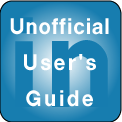 LinkedIn is a “social” site that will prove to be of rare benefit to business executives and professionals in building individualized collaborative networks, as I explained in detail in the GHCJ Review of LinkedIn. However, LinkedIn is seriously lacking in providing a step-by-step guide to help the motivated executive to tap its real value. The functionality of the website is easy to use, but many of the finer points of LinkedIn are lost on the majority of users. This guide attempts to address that. Continue reading The Unofficial LinkedIn User’s Guide for Executives and Professionals LinkedIn is a “social” site that will prove to be of rare benefit to business executives and professionals in building individualized collaborative networks, as I explained in detail in the GHCJ Review of LinkedIn. However, LinkedIn is seriously lacking in providing a step-by-step guide to help the motivated executive to tap its real value. The functionality of the website is easy to use, but many of the finer points of LinkedIn are lost on the majority of users. This guide attempts to address that. Continue reading The Unofficial LinkedIn User’s Guide for Executives and Professionals
By Christopher Rollyson Valuable Space to Create Your Professional Knowledge Network
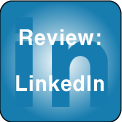 LinkedIn is a social network website that enables people to build and manage (mostly) business connections in order to discover jobs, ventures, new clients, etc. Unlike other social networking sites, its focus is business rather than social or entertainment. LinkedIn is a social network website that enables people to build and manage (mostly) business connections in order to discover jobs, ventures, new clients, etc. Unlike other social networking sites, its focus is business rather than social or entertainment.
LinkedIn is emerging as a dominant networking environment for executives and professionals, and its development will be of interest as both an immensely practical tool and as a study of the social network phenomenon. Founded in 2003, LinkedIn crossed the chasm in 2007, as the company reports that thousands of people are joining per day. Today, it has more than 9 million members, and membership is very global.
As valuable as LinkedIn is, one of the company’s weakest points is making itself approachable to executives. For example, I recently attended an Illinois IT Association Sales Round Table at which attendees represented a broad range of executives, IT management and professionals and were no strangers to developing relationships and business development. Presenter Steve Weinberg gave an excellent presentation on LinkedIn’s potential and features. Listening to the interaction of the at-capacity crowd, I was impressed by the lack of knowledge in the room, including my own.
Therefore, I decided to put LinkedIn under the microscope. I investigated its methods for enabling networking while protecting privacy, and I delved into its tools and methods. I wanted to assess whether it was ready for prime time for the time-pressed business and government leaders I know. I conclude that LinkedIn is an extremely useful tool, and most professionals and executives will benefit significantly by using it.
 Not only that, LinkedIn has tremendous potential for leaders of large organizations because it offers the possibility to create a personal professional network, which can access the world “out there” and make them more effective. Many of them overlook it and depend on their internal networks. As we’ve written extensively, the Knowledge Economy will see leaders create the most value by collaborating seamlessly with people inside and outside of their organizations to drive innovation. Not only that, LinkedIn has tremendous potential for leaders of large organizations because it offers the possibility to create a personal professional network, which can access the world “out there” and make them more effective. Many of them overlook it and depend on their internal networks. As we’ve written extensively, the Knowledge Economy will see leaders create the most value by collaborating seamlessly with people inside and outside of their organizations to drive innovation.
By Christopher Rollyson ![Payment Processor Wins Web 0.2 Citation for Delivering "Yechsperience" [customer experience satire]](http://rollyson.net/wp-content/uploads/2007/03/webdot2-logo.png) Achieves Payor of Last Resort Status Achieves Payor of Last Resort Status
Chicago, 13 March 2007—Today, the Global Human Capital Journal awarded StaySmall, the global payment intermediary, the odious Web 0.2 Citation for inducing a poignant bout of customer yechsperience™.
As readers know, the GHCJ exercises stringent criteria before conferring the Web 0.2 Citation: to earn it, companies must induce prolonged feelings of frustration, confusion and anguish in customers more effectively than their competitors.
Tonight, StaySmall delivered in spades, as reported by the judges. Here is a summarized account of the findings…
By Christopher Rollyson Web 2.0 Is Transforming Relationships Between Customers and Companies*
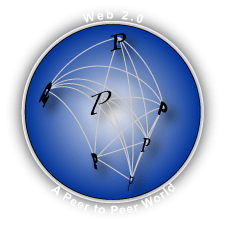 I’ll risk using a hype-laden term like “Web 2.0” in the title: I think most of us have been around long enough to understand that hype doesn’t mean that nothing is there, although it can distract us from seeing things that we should be watching. I’ll risk using a hype-laden term like “Web 2.0” in the title: I think most of us have been around long enough to understand that hype doesn’t mean that nothing is there, although it can distract us from seeing things that we should be watching.
I have been in the thick of the “adoption curves” of Java, e-business transformation and SOA/Web services (detail). They have been instrumental in creating a new information infrastructure and business process capabilities. “Web 2.0” will prove to be the most transformational so far because it is changing relationships. It changes individuals’ relationships with each other, and it will change how companies and the customers relate to each other. It will demand “Marketing 2.0.”
Tectonic Shift
As I argued in The 3.x Economies, we are transitioning away from the Industrial Economy and entering the Knowledge Economy. In the Industrial Economy, companies created value by manufacturing products efficiently based on their core competencies, and they marketed products to customers. They also created and marketed services on a large scale. “Marketing” grew as a profession during the 20th century when supply began to outstrip supply. Its job was to “create demand” (for production capacity).
In the Knowledge Economy, agricultural and industrial products are still consumed, but most of the perceived value and differentiation is achieved by using information to create knowledge. Starbucks sells coffee (the product) but the differentiation is the experience of drinking coffee in a café (the knowledge is creating the experience of drinking coffee in a café, en masse and everywhere). Likewise, Apple sells computers and iPods, but its differentiation is creating and sharing digital entertainment experience. Even work (“we do that, too”) is a fun experience.
In the Industrial Economy, companies produced, and consumers consumed. Companies had more information about customer needs (in general, not about individuals), competitive solutions and substitutes. Superior information gave companies an advantage in the market over consumers. They are still accustomed to this.
Web 2.0 resources** enable individuals to create, find and share text, graphic, audio and video content, virtually for free, globally. Individuals are no longer isolated, and they can assemble, educate each other and become more proactive when, where and how they want, with few restrictions. Time Magazine recognized “You,” the Web 2.0-enabled individual, as its 2006 person of the year, reflecting this trend.
Individuals are getting advice from each other about how to create satisfying experience, and they often trust other individuals in online forums to give them the skinny on a company, product or service more than an expert or a company representative. Other individuals have cred because they are customer focused by default, and they are not tainted by having to make a buck. Moreover, their advice is vetted by other people in the community, who chime in with their experiences (using the product to accomplish something) and contradict advice that does not jibe.
Isolated individuals had access to very little specific knowledge, but today people assemble in smart tribes and can develop extremely valuable specific knowledge extremely quickly. In 2007, when I discuss this with corporate executives, they doubt its relevance because individuals have been isolated and ignorant. However, smart companies will aggressively experiment with tapping knowledge created by customer-to-customer interaction in Web 2.0 spaces. They will push to integrate this information into their discovery, marketing and innovation processes. Patty Seybold gets this: “The company with the smartest customers will win.” Help your customers become smarter, and they will educate you. Your innovation will outperform your competitors. Industrial Economy efficiency is increasingly table stakes, and innovation will increasingly drive value—and survival.
Marketing 2.0
Marketing 2.0 will be much more profitable than Marketing 1.0, which could not access the voice of the customer very easily. In Marketing 1.0, companies simulated understanding of customer needs, using limited data points from focus groups, point of sale data, surveys, etc. They used these to create demand models. They created new offerings and “innovated.” Results have been consistent: product failures have been rife in every industry, and innovation efforts have over a 90% failure rate. Prior to Web 2.0, reaching customers and integrating their knowledge into processes was not economically feasible. However, Web 2.0 communications are digital and asynchronous, which significantly reduces the cost of finding and exchanging information.
Customers interact digitally and generate user-specific information for fun: people like collaborating online, and solving problems makes them feel good about themselves. Marketing 2.0 will mix customers and providers in a new collaborative milieu. Of course, online collaboration has been around a long time in the form of bulletin boards, support forums and communities, but it has mostly been limited to techies. However, Web 2.0 will increasingly be mainstream—and everywhere. Combine Web 2.0 resources like social networks, blogs, YouTube and Flickr with mobility, and customers will communicate 24×7, everywhere, about every product category. Imagine point of sale reviews for all retail and wholesale.
Marketing 2.0 will continue to use Marketing 1.0 processes, but it will integrate the real-time, increasingly rich “voice of the customer” to dramatically increase the success of new offerings and innovation. Astute companies will develop action plans for 2007—and act on them. For more on action steps, see “Market Advisory on Consumer Empowerment.”
*A slightly longer version of the article that appeared in the Illinois IT Assocation’s Industry Weekly, March 12, 2007
**Web 2.0 is a bit of an amorphous term. It refers to technologies that promote P2P (peer to peer) interaction. However, these technologies are bundled into fantastically user-friendly websites like LinkedIn, MySpace, Flickr and YouTube. Intermediaries like Technorati and Del.icio.us help people find content based on their interests. Also see Wikipedia’s excellent entry.
By Christopher Rollyson UPS: Transforming Package Delivery into a One-to-One Business summarizes the CEO’s vision for meeting customer empowerment with transformation.
 Michael L. Eskew, Chairman and CEO of UPS, outlined the package delivery giant’s vision for transforming itself into a “one-to-one” business at the Executives’ Club of Chicago’s Enterprise CEO Lunch, 15 February 2007. Before a packed house at the Chicago Hilton, he demonstrated UPS’s creative “whiteboard” marketing campaign and explained its role in communicating to customers the value of the company’s transformation. Michael L. Eskew, Chairman and CEO of UPS, outlined the package delivery giant’s vision for transforming itself into a “one-to-one” business at the Executives’ Club of Chicago’s Enterprise CEO Lunch, 15 February 2007. Before a packed house at the Chicago Hilton, he demonstrated UPS’s creative “whiteboard” marketing campaign and explained its role in communicating to customers the value of the company’s transformation.
The importance of UPS’s vision extends beyond UPS stakeholders because it reflects a shift in emphasis away from industrial efficiency to knowledge-based innovation. Make no mistake, efficiency is mission-critical to every business, but fewer companies can differentiate based on efficiency. To its considerable credit, UPS sees the shift and is striving to empower customers with information as well as delivery services.
A History of Transformation
Mr. Eskew set the context by emphasizing that UPS has a history of transforming itself to meet technology and market challenges:
- Founder Jim Casey began the company as bicycle messenger service in 1907, but emerging technology, in the form of the telephone, began to drive down demand.
- The company shifted emphasis to serve downtown retailers by delivering shoppers’ parcels to their homes via uniformed messengers. This business was subsequently challenged by the automobile after World War II, which gave rise to shopping centers and the fall of the “downtown shopper.”
- In response, UPS changed its focus to business customers, away from retail. It grew its numerous business-focused delivery services on a global scale.
- Today the value proposition is enabling customers’ growth through transparent supply chain services. The company has acquired complementary logistics and supply chain services and made aggressive technology investments in order to deliver as much as its services as customers wants—when and how customers want them. Reflecting the change, the “parcel” dropped from company branding, and the name changed from “United Parcel Service” to “UPS.” The tagline changed from “We run the tightest ship in the shipping business” to “What Can Brown Do For You?” For fun, here is a tagline history.
In August 2005, Mr. Eskew addressed the Asia Technology Summit, and his comments about UPS’s vision beautifully articulated the shift in focus from the Industrial Economy’s efficiency to the Knowledge Economy’s innovation:
When I started with UPS back in 1972, we were a one-dimensional business… we charged one rate… (whether) you were the largest department store in America or a small family-owned business… Residential and commercial rates were all the same. We picked up and delivered packages on our terms, that is, whenever we said we would. We were designed for efficiency and whatever was best for the masses… We came to work every day thinking about how we could better optimize the system.
We didn’t think about how we could help make each customer better; rather, how we could optimize the system better. (1:1 Technology’s Role in Creating Customer Intimacy)
New Customer Focus
Today, UPSers are constantly asking themselves, “How can we make senders and receivers more successful?” Executives are looking at two key forces that drive commerce today: 1) the globalization of labor and 2) the empowerment of the individual. These trends are reflected by the growth of the “small package” business:
- In 1976, the U.S. had $10 billion in foreign exchange per day, and 2% of U.S. GDP involved movement of “small package” freight (consumer pull)
- In 2006, the U.S. had $10 billion in foreign exchange per second, and 12% of U.S. GDP involved movement of “small package” freight
- These figures show that the supply chain is speeding up and becoming more granular and responsive
UPS is responding to these market forces by transforming how it goes to market: rather than “pushing” vertical asset “solutions” to customers, the company seeks to empower customers to “pull” individualized services to themselves. In other words, it is personalizing services, treating each customer, each package and each transaction as if it were the only one, and it has a strong SMB (small/medium business) focus. In connection with this, Mr Eskew cited “the Internet” as a metaphor: on the Web, small companies can look as big as the biggest ones. (The company has about 500 custom-built applications that enhance granular visibility into all aspects of the supply chain, and it makes select functionality available to customers through Web services. For more on this, see UPS Seeks End-to-end.. Visibility.)
Marketing Campaign: “Whiteboard”
However, it isn’t enough for UPS to transform itself; the company must also communicate to customers how it is changing, and what the transformation means to them. Enter “whiteboard,” an icon for brainstorming and creating sophisticated solutions for customer needs. “Andy” is the character that interacts with online customers while at the (online) whiteboard. Mr. Eskew demonstrated some of its concepts and features, live:
- UPS wants to get customers thinking and rolling their own solutions using UPS services.
- Choose time of delivery, mode and cost, and track every package all the way.
- Seamless supply chain solutions can bring global customers (and suppliers) closer.
- Clear customs faster by bundling discrete parcels to clear and splitting them for individual delivery afterward.
- Think of UPS as a “rolling warehouse,” whether over land, sea or air.
Mr. Eskew also stressed that UPS strives to make the complex simple (another way to look at this is that UPS encapsulates complexity. Customers get transparency of service options and shipping information, but they don’t have to understand all the intricacies of how UPS gets the package there).
Wrap-up and Q&A
- Mr. Eskew’s concluding message was, “Don’t let your current success prevent you from transforming your company.” UPS is still here because it’s been willing to transform itself to meet the market.
- One-to-one is how to meet customers today. Mass marketing is less relevant.
- Nimble is more important than size in many cases.
- Running a massively complex company like UPS is possible when you “get out of the way and depend on your people.”
- Chicago is very important to UPS to to its importance as a locus of distribution. UPS will continue to have a strong presence here.
- Regarding competitors, it’s more important to focus on customers.
- Of course, the growth of international trade is very important to UPS. China and India are on everyone’s list, but don’t overlook Europe and the U.S. UPS’s European operations have seen double digit growth over the past decade.
- The global labor shift is fueling UPS’s growth. In the 20th century, companies brought labor to the company (production line), beginning with Henry Ford’s revolutionary assembly line. Today, work flows to people.
Analysis and Conclusions
- UPS’s transformation reflects the shift to the Knowledge Economy in which companies: 1) create most of their value through knowledge rather than products and 2) use customer experience as a touchstone for innovation. For more on this, see The Knowledge Economy: the Ultimate Context for Understanding the Future.
- Supply chains can be defined as processes in which partners collaborate by sharing information and coordinating action. They have material channels and information channels. The latter enable coordination and largely determine the efficiency of the supply chain, which has a powerful bearing on competitiveness.
- UPS does move bits at the end of the day, but its differentiation increasingly comes from the information channel. When customers configure highly granular services (often for their customers), they create options and services for their customers. Many times, information about the movement of packages is worth as much or more than the package itself.
- Metaphorically, UPS and its rivals are the Internet of bits. On the Internet, a piece of data—whether text, picture, voice or video—gets split into packets that travel separately over the network and get reassembled at the receiver’s end. Similarly, UPS can chunk your bits-based packages to make them cross borders more quickly and/or cheaply and disassemble them for individual delivery. Their capabilities are growing in this area, and the increasing granularity of control over information can provide customers with extensive room to innovate.
- UPS delivers an increasingly sophisticated suite of supply chain and logistics resources to customers, many of whom cannot afford advanced supply chain and logistics experts as can large enterprises. Using information effectively, companies of all sizes can minimize the need for warehouse space and safety stock by employing just in time processes.
By Christopher Rollyson Immensely Valuable Field Guide for Word of Mouth Practitioners—with a Twist
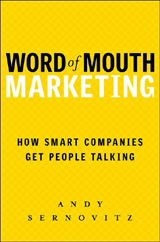 Word of Mouth Marketing is an exceptionally useful, insightful and surprising book. Andy Sernovitz has done a masterful job at creating a brief, lucid and tactical guide to realigning your company’s relationships with your customers, quickly and inexpensively. It is very straightforward, honest and full of practical techniques. Moreover, it is very human because it addresses customers as human beings, not demographics. I suspect that this aspect of the book might peeve those marketers that are invested in the difficulty and complexity of their craft. Think about it: when customers were (relatively) mute and invisible, marketers were the intermediary between the enterprise and the customer; in the absence of the customer’s voice, they created models and theories to simulate it. WOM, powered by Web 2.0, means that customers can talk in their own words, and companies can listen. The customer’s back! Word of Mouth Marketing is an exceptionally useful, insightful and surprising book. Andy Sernovitz has done a masterful job at creating a brief, lucid and tactical guide to realigning your company’s relationships with your customers, quickly and inexpensively. It is very straightforward, honest and full of practical techniques. Moreover, it is very human because it addresses customers as human beings, not demographics. I suspect that this aspect of the book might peeve those marketers that are invested in the difficulty and complexity of their craft. Think about it: when customers were (relatively) mute and invisible, marketers were the intermediary between the enterprise and the customer; in the absence of the customer’s voice, they created models and theories to simulate it. WOM, powered by Web 2.0, means that customers can talk in their own words, and companies can listen. The customer’s back!
However, this direct customer connection also means that marketing will be much more fun and less frustrating for companies that understand the shift and engage their customers. This direct, fun and productive new reality emanates from the book’s every page, and its energy is infectious. As a business strategy consultant, I cannot overstate the importance of beginning to act on consumer empowerment as soon as possible. I highly recommend the book as a way to change your thinking and develop some practical first steps.
By Christopher Rollyson Retrofitting GM, the Quintessential Industrial Economy Enterprise reflects Knowledge Economy disruption as production-focused enterprises languish as customers continue to forsake them.
 As readers of these pages know well, I estimate that one of the most poignant changes that faces Industrial Economy enterprises is shifting their primary focus from production and operations to the customer. The Industrial Economy mechanized work and production, and by any measure it created unprecedented wealth by drastically lowering per-unit costs of any kind of product you can name, bringing more products within the means of more people. This worked extremely well while demand exceeded supply: customers were excited to have their first car/house/television, and they were happy with what producers brought to market. As readers of these pages know well, I estimate that one of the most poignant changes that faces Industrial Economy enterprises is shifting their primary focus from production and operations to the customer. The Industrial Economy mechanized work and production, and by any measure it created unprecedented wealth by drastically lowering per-unit costs of any kind of product you can name, bringing more products within the means of more people. This worked extremely well while demand exceeded supply: customers were excited to have their first car/house/television, and they were happy with what producers brought to market.
However, Industrial Economy CSFs (critical success factors) look extremely stale in the Knowledge Economy (also see Transformation: From Self-contained Company to Networked Global Organization). The e-business revolution has vastly enhanced communications, decreased cycle times and moved the mass customization model closer to reality.
Big Dealer to Detroit: Fix How You Make Cars (The Wall Street Journal, 9 February 2007) spells out the problem extremely well:
“One of the toughest problems facing the ailing U.S. car industry stems from Detroit’s century-old business model, which dates to Henry Ford’s mass production of millions of largely identical Model T’s. Rather than build cars to suit customer tastes, U.S. auto makers churn out what makes sense for their plants, and then use incentives and rebates to lure buyers.”
Large organizations have huge infrastructure costs which can produce fantastic efficiency through economies of scale—as long as production and demand remain high. Short product life cycles are the bête noire of the large scale enterprise and, unfortunately, the rule of the emerging Knowledge Economy, in which customers collectively discover and expose differentiating information about any product or service in existence. Hyper-available information about products and services shortens product life cycles and drives commoditization. Another quote from the article:
“The Big Three are trying to be more market-driven, but it isn’t easy. Because they have big and rising costs for union health care and pensions, they need to maintain revenue, which means they often keep plants open and build more cars than the market demands.”
There is no simple solution to the transformation of the large-scale enterprise, but enlisting customers to help with product ideas would be a step in the right direction. Web 2.0-enabled customers are increasingly accessible and eager to collaborate when companies know how to engage them (for more, see the review of Outside Innovation). As it is, focus groups are so artificial that they often fail to produce real insight: too often the context is that the company is asking the customer to respond to certain scenarios; they rarely ask openly what the customer wants, and customer-to-customer interaction is virtually always very limited.
Customer-to-customer interaction in social network sites and blogs does not impose the limitations of the enterprise, and enterprises can gain true insight into the customer experience by participating in them. Until then, Detroit will have this result:
“Detroit often misses when it tries guessing the market. Chrysler thought buyers of its redesigned Jeep Wrangler would want two doors and a canvas roof. Dealers say the four-door model with a hard top is a big seller.”
|
|
 After Gary Forsee’s luncheon address, a diverse panel of executives took the stage to discuss global technology leadership. Hardik Bhatt, CIO of the City of Chicago, Steve Goldman, Director of Architecture, the Chicago Mercantile Exchange, Raymond Spencer, CEO of Kanbay International, and David Weick, Global CIO of McDonald’s, shared their visions for Chicago’s global role in the world. Janet Kennedy, Midwest General Manager of Microsoft, gracefully moderated the panel discussion. The Executives’ Club of Chicago’s quarterly Technology Conference took place March 8 at the Chicago Hilton.
After Gary Forsee’s luncheon address, a diverse panel of executives took the stage to discuss global technology leadership. Hardik Bhatt, CIO of the City of Chicago, Steve Goldman, Director of Architecture, the Chicago Mercantile Exchange, Raymond Spencer, CEO of Kanbay International, and David Weick, Global CIO of McDonald’s, shared their visions for Chicago’s global role in the world. Janet Kennedy, Midwest General Manager of Microsoft, gracefully moderated the panel discussion. The Executives’ Club of Chicago’s quarterly Technology Conference took place March 8 at the Chicago Hilton.





![Payment Processor Wins Web 0.2 Citation for Delivering "Yechsperience" [customer experience satire]](http://rollyson.net/wp-content/uploads/2007/03/webdot2-logo.png)



